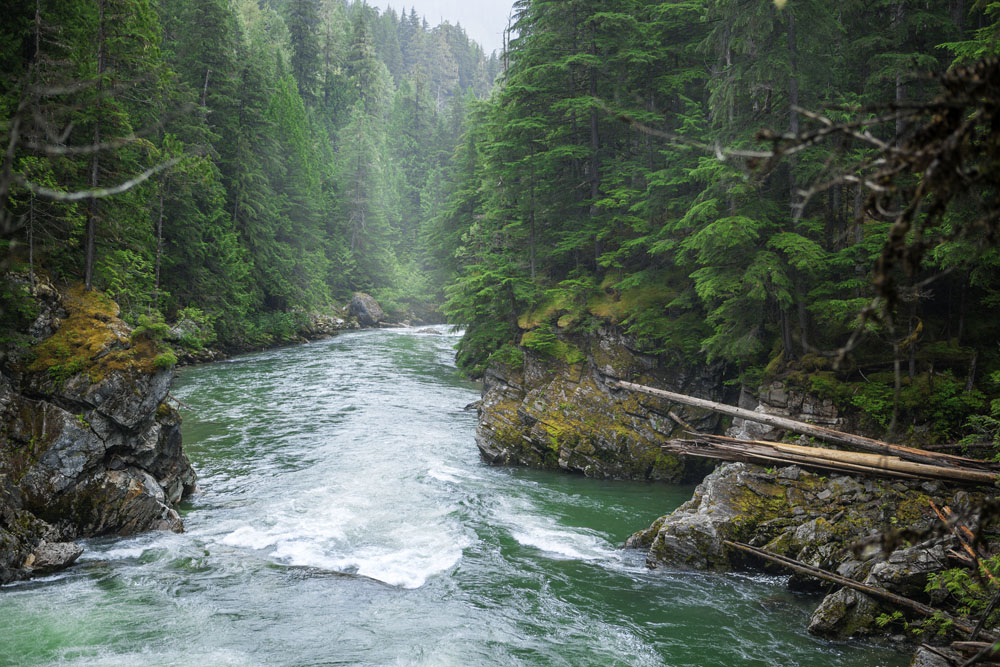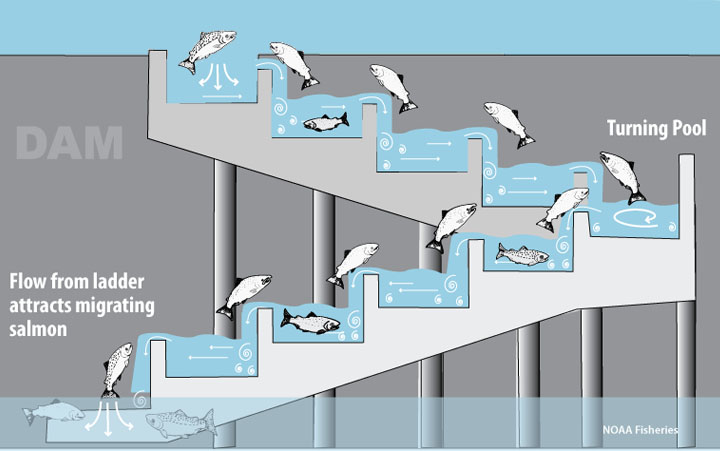Moving water is an important renewable energy source in Canada. We’ve already looked at how oceans can be used to create energy. Now, we’re heading farther inland to look at how our rivers and streams can generate electricity too. It’s hydropower time!

Here’s how it works
A hydropower station is usually set up along a river or stream. The water flows into a pipe where it meets a turbine. The pressure from the flowing water pushes against the blades of the turbine, causing it to spin, which powers a generator and produces electricity. The water then flows out of the power station and continues on its way.
Hydropower plants often use dams to control when the water flows and how much of it enters into the pipes. This lets us generate electricity during the times of day when we need it most.

Canada is a Hydropower Powerhouse
Did you know that 60% of the electricity generated in Canada comes from hydropower? While almost every province and territory generates hydropower (except Nunavut and PEI), the big winner is Quebec! 95% of that province’s electricity comes from hydropower.
Our hydropower game isn’t just strong in Canada; it’s strong around the world! We are one of the top generators in the world, and together with China, Brazil and the USA, we generate half of the world’s supply!
Taking the Environment into Account
The bad news
Hydropower isn’t perfect. It can be damaging to ecosystems if the power stations interrupt the natural flow of the water, cutting off fish migration routes and stopping important sediments from traveling downstream. They can cause water levels to rise and fall with the energy demand, sometimes as much as several hundred feet! This can impact where animals like birds, fish and small mammals grow, nest feed, or spawn. It also prevents plant growth, which can lead to erosion of the land along the bank.

The good news
Hydropower can also help us cut down on our greenhouse gas emissions because it allows us to generate electricity without using fossil fuels. In Canada and the USA, hydropower helps us avoid 350 million tonnes of greenhouse gas emissions a year! That’s like taking 76 million cars off the road!
Scientists and engineers are also working hard to reduce the environmental impact of hydropower plants. Some dams are already using fish-friendly turbines, which let fish to swim through the blades, and other use fish ladder or bypass systems, which allow fish to swim up around the dam. We’ll have to wait and see what they think of next.
Check out other types of renewable energy!
Generously sponsored by:

Sources:
www.epa.gov/greenvehicles/greenhouse-gas-emissions-typical-passenger-vehicle
www.nrcan.gc.ca/energy/energy-sources-distribution/renewables/small-hydropower/fish-friendly-turbine/7367
fwee.org/environment/how-a-hydroelectric-project-can-affect-a-river/how-a-hydro-project-affects-a-river-print/
www.enbridge.com/energy-matters/energy-school/hydroelectric-power-in-north-america
www.cer-rec.gc.ca/nrg/sttstc/lctrct/rprt/2017cnddptnrnwblpwr/hdr-eng.html
www.nrcan.gc.ca/science-and-data/data-and-analysis/energy-data-and-analysis/energy-facts/renewable-energy-facts/20069#L4



I love it so much earth ranger
It’s so awesome:)
Wow
It’s really cool that dams provide electricity. I never knew that!
l love the water and really want to protect it.
i love water
Me and my family went to Niagara Falls. There was a big waterfall, I loved it there because there was lots of water! I am happy that you made this mission!❤❤
Poor fish
Wow
Water is awesome